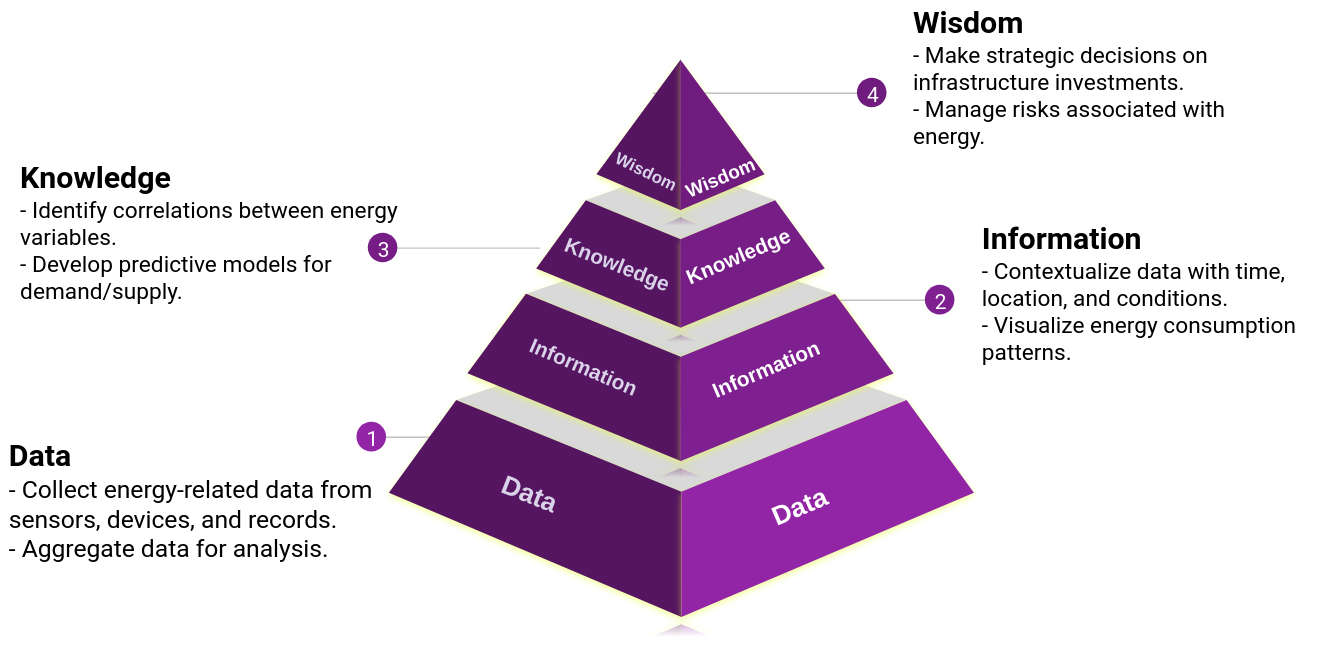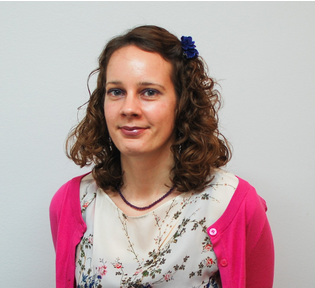A simplified approach to advancing grid technology involves design with built-in compatibility to ensure seamless communication.
However, building different complex systems (e.g., intelligent transport systems, smart grid systems, smart city systems) and interfaces that work well together is challenging. There are many rules and methods that must be followed, which can cause confusion among contractors. Getting these systems to talk to each other and creating appropriate software is a complex challenge that can lead to issues when trying to deploy new technologies.
Having a clear vision of interoperability may help mitigate these issues. Interoperability facilitates data exchange across diverse systems, applications, and domains. To achieve this, interoperability profiles must first be implemented. This can be done by setting clear standards for how different parts should work together, thereby guaranteeing smooth interaction and optimal performance.
Attaining Wisdom from Data
The first step of interoperability implementation is the process that converts raw data into actionable wisdom, as depicted in Figure 1 by the DIKW pyramid. DIKW stands for Data, Information, Knowledge and Wisdom. DIKW succinctly captures the progression from raw data to transformative insights. This transformative journey commences with the conversion of data into usable information, followed by the transformation of information into knowledge. Ultimately, the synthesis of knowledge leads to the attainment of wisdom. An idea of how this can be reflected specifically in the energy sector is also shown in Figure 1.
 Figure 1. Data, Information, Knowledge and Wisdom (DIKW) in the context of the energy sector.
Figure 1. Data, Information, Knowledge and Wisdom (DIKW) in the context of the energy sector.
The DIKW Vision of Interoperability
The DIKW pyramid can be applied to interoperability, with the data transformation process re-expressed as follows: the data exchanged is converted into usable information, the information exchanged itself is transformed into usable knowledge, the knowledge exchanged is transformed into usable wisdom, and the wisdom exchanged can be used to drive collaboration between systems.
The integration of the DIKW vision for interoperability is critical for the industry in order to support the advent of artificial intelligence and increasingly autonomous systems. This calls for more methods, tools and solutions regarding how to digitally represent information, knowledge and wisdom that can be shared. As pointed out in ISO/IEC/IEEE 24641 (Methods and Tools for Model-based Systems and Software Engineering, or MBSSE, standard published in May 2023), models are the main representation scheme that can be used at engineering level to capture information, knowledge and wisdom.
Thus, we re-express the desired objective regarding interoperability from a technical level, fully unleashing the potential of data at the interoperability level and extracting profound insights to drive informed decision-making through the proper use of and access to models and ontologies. Here, we explain how this can occur through the concept of interoperability profiles.
The Need for Interoperability Profiles
A symphony of precision and innovation, the journey of building interoperability calls for two pivotal artifacts; the first of these is the Interoperability Point, the cornerstone of connectivity and integration. As elucidated in ‘IoT Systems and Interoperability’, this point signifies the bridge between diverse systems where data harmoniously converges. Second, the Interoperability Case, as defined in ‘Reference Architectures and Interoperability in Digital Platforms’, encapsulates the essence of seamless interaction, unifying disparate elements into a connected whole. Together, these artifacts result in interoperability profiles.
Interoperability profiles essentially describe requirements for what information has to be exchanged, and how it is exchanged. The ‘what’ should therefore include structured representation of ontologies and models describing information, knowledge and wisdom. By specifying profiles, organizations ensure consistent data structures, facilitating seamless data exchange and streamlined processes.
 Figure 2. Building Interoperability Profiles Compliant with the DIKW Process in the context of the energy sector.
Figure 2. Building Interoperability Profiles Compliant with the DIKW Process in the context of the energy sector.
Collaboration is enhanced through shared ontologies and models, which foster common understanding and smoother communication. While collaboration is encouraged, sensitive information can also be safeguarded through encapsulation, which allows organizations to participate in an interoperable ecosystem.

Figure 3. Profiles: Balancing Shared and Private Components.
Specific ontologies and models enable the protection of Intellectual Property Rights (IPR), thereby ensuring that proprietary knowledge and data remain secure while remaining a part of the larger interoperable landscape. A prime example of this is Enershare, in which these profiles are not just possible but essential, fostering trust, sovereignty, and a robust data governance ecosystem, by also leveraging open standards, such as FIWARE ETSI Context broker, SGAM, CIM, ETSI SmartM2M, SAREF Ontology.
The Approach to Interoperability
To implement interoperability successfully, a systematic approach is essential. This begins with ontology and model engineering, where data structures are designed and refined. The next step involves profile engineering, in which standardized representations of information, knowledge and wisdom are established.
An interaction model also comes into play to facilitate seamless communication and data exchange. A behaviour model, such as data usage protocols, ensures that all interactions comply with established standards. Finally, a well-thought-out implementation plan brings the vision of interoperability to life. This approach is elaborated in Figure 4.

Figure 4. Systematic Steps for Implementing Interoperability.
Facilitating the Creation of Profiles
As interoperability profiles can be complex, we call for interoperability practice based on the reuse ontological models. This requires some anticipation when specifying them by describing them as patterns.
The Benefits of Interoperability
There are many advantages of interoperability. Firstly, it provides a higher level of assurance by promoting rigorous testing of interactions and behaviours. This then leads to improved reliability and predictability in data exchanges, thereby ensuring compliance in data usage and addressing concerns related to data privacy, security and regulatory requirements. Ultimately, interoperability empowers organizations to harness the full potential of their data, driving innovation and informed decision-making.
Behavioural interoperability enhances the level of assurance by subjecting interactions and behaviours to rigorous testing. This approach ensures that data usage conforms to established standards, assuring stakeholders of ethical and compliant practices.
Trialog’s ongoing collaboration to standardize ISO/IEC PWI Policy and Behavioral Interoperability introduces new dimensions to the journey of interoperability. This standard shapes various lifecycle processes, fostering both semantic and behavioural interoperability. It also brings together key disciplines, such as ontology engineering, profile engineering, verification and validation engineering, and system engineering. This unified effort lays the groundwork for a future where seamless connectivity prevails.
In this intricate network, a vision for interoperability in the energy sector assumes a central role. Transitioning from concept to reality, the building of connectivity, knowledge propagation and informed decision-making unifies collaborators, shaping a cohesive future where energy systems harmoniously synchronize. This could be of great significance for projects such as int:net, of which Trialog is also a member.



